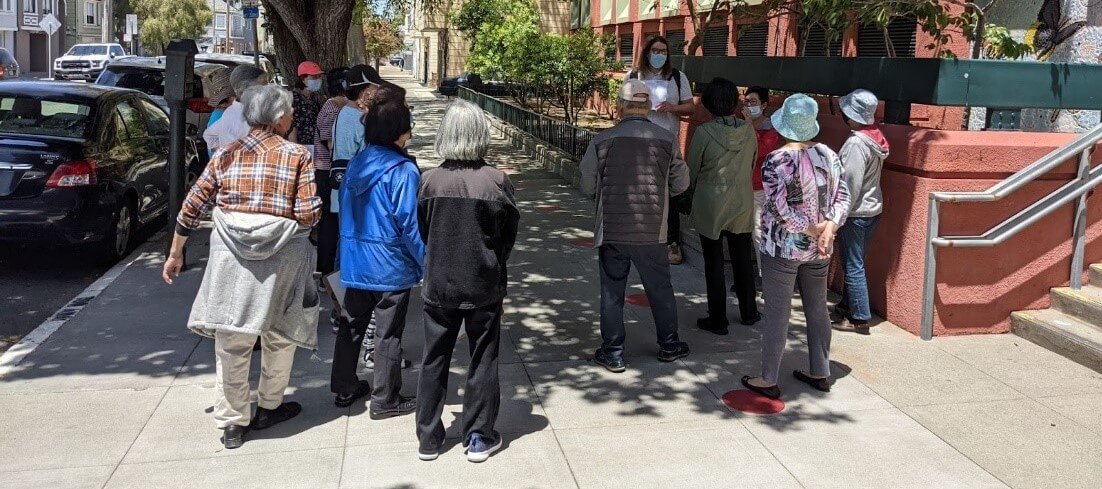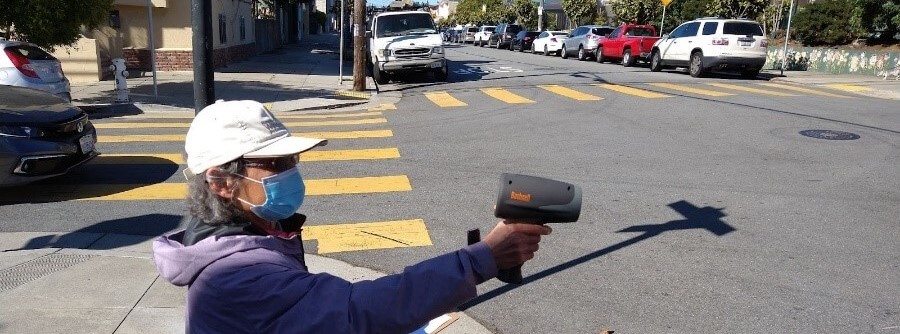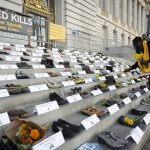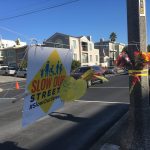How can Slow Streets work better for all ages and abilities?
Over the past almost year and a half, 45 miles of ‘Slow Streets’ have come to life in San Francisco. These low-traffic streets were created for people to get around on foot and bicycle with plenty of space for social distancing while also being safe from dangerous traffic.
The Senior & Disability Workgroup of the Vision Zero Coalition decided to dig into how Slow Streets work – and how they could work better – specifically for seniors and people with disabilities. The Workgroup conducted a multi-lingual survey, virtual listening sessions, and walks on Slow Streets in the Mission, Excelsior, Richmond, and Haight to learn more.
(The Senior & Disability Workgroup includes the Arc of San Francisco, Independent Living Resource Center, Senior & Disability Action, and is facilitated by Walk SF.)

What the Workgroup Learned
Here are some highlights from what the Senior & Disability Working Group shared in a short report to the SFMTA.
Sharing street space is more precarious for older adults and people with disabilities. In a forum co-hosted by Senior & Disability Action for Deaf and hard-of-hearing people, participants shared that they aren’t safe walking in a street shared with people biking and driving since bikers and drivers may assume they’ll hear them coming by and move out of the way.
While some other survey respondents shared that they enjoy using Slow Streets for getting around on bike, most of those who joined the walks preferred to stick to the sidewalks on foot, where they wouldn’t have to quickly move out of the way from traffic. Some felt like this made the Slow Streets less useful for them, but others noted enjoying being able to see children and others using the street space.
Additional amenities, like seating, could make Slow Streets more accessible. Providing space to rest regularly along a Slow Street can make walking a Slow Street possible for those who otherwise would not be able to enjoy the space. Shade was the second most commonly cited need, but people also mentioned expanding the Adaptive Bike Share to popular Slow Streets to create another way of enjoying these traffic-calmed streets.
While traffic is lower and generally calmer, traffic dangers remain. While Slow Streets have reduced through-traffic, driver behavior is inconsistent and can be dangerous. Workgroup members observed and heard from participants that mid-block speeding and drivers continuing to drive on Slow Streets for multiple blocks is frequent. Additionally, while many intersections on these largely residential streets are four-way stops, intersections with two-way stops (e.g. 16th and Shotwell) leave walkers with the tough choice of risking an uncontrolled crossing or leaving the Slow Street to find a safer place to cross.

San Francisco’s Slow Streets have evolved since they launched in April 2020. New barricades have been installed on some Slow Streets, some Slow Streets have been removed, and the City now has a process for making some Slow Streets permanent. As Slow Streets continue to evolve, the Senior & Disability Workgroup will be sure SFMTA considers these recommendations so street design is as accessible and accommodating as possible.




